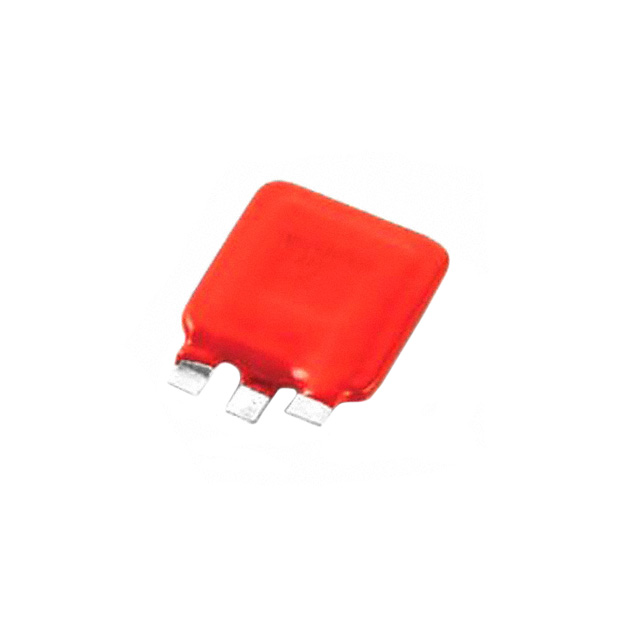
All about Autotransformers
Global electronic component supplier ERSAELECTRONICS: Rich inventory for one-stop shopping. Inquire easily, and receive fast, customized solutions and quotes.
What are Autotransformers?
An autotransformer is a type of electrical transformer that consists of a single winding, as opposed to the traditional two-winding transformer. It is designed to transfer electrical energy from one circuit to another while also providing voltage transformation. The autotransformer achieves this by utilizing a common portion of the winding as both the primary and secondary winding.
In an autotransformer, a portion of the winding acts as the primary winding, while another portion serves as the secondary winding. This shared portion is known as the common winding or the tapped winding. By tapping different points along the winding, it is possible to obtain various voltage ratios for the transformer. The tap points allow for adjusting the voltage levels according to specific requirements.
How Auto Transformers Work?
Autotransformers work based on the principles of electromagnetic induction and voltage transformation. Unlike traditional two-winding transformers, auto transformers have a single winding that serves as both the primary and secondary winding. This shared winding is tapped at different points to achieve the desired voltage transformation.
When an AC voltage is applied to the primary side of an autotransformer, it creates a magnetic field in the core of the transformer. This magnetic field induces a voltage in the common winding, which acts as both the primary and secondary winding. The magnitude of the induced voltage depends on the number of turns in the winding and the position of the tap point.
By selecting different tap points along the winding, the voltage ratio can be adjusted. For example, if the tap is taken near the input voltage, the voltage ratio will be closer to unity, resulting in a minimal voltage transformation. On the other hand, if the tap is taken closer to the output end of the winding, a higher voltage transformation can be achieved.
When a load is connected to the secondary side of the autotransformer, the voltage induced in the common winding is transferred to the load. The voltage transformation occurs due to the difference in the number of turns between the primary and secondary sections of the winding.
The autotransformer operates based on the principle of voltage sharing. A portion of the input voltage is directly transferred to the output, while the remaining portion is dropped across the winding itself. This voltage-sharing characteristic allows autotransformers to be more efficient than two-winding transformers since they avoid unnecessary energy transfer between windings.
However, it's essential to consider the limitations of autotransformers. Due to the shared winding, the secondary circuit is not electrically isolated from the primary circuit. This lack of isolation can be a safety concern and may not be suitable in certain applications where electrical isolation is required.
Autotransformers also have a lower impedance compared to two-winding transformers, which can affect their ability to handle high fault currents. Proper protection measures should be in place to protect the autotransformer and ensure the safe operation of the electrical system.
In summary, auto transformers work by utilizing a single winding that serves as both the primary and secondary winding. The voltage transformation is achieved by tapping different points along the winding to adjust the voltage ratio. They operate based on the principles of electromagnetic induction and voltage sharing. While they offer advantages such as efficiency and compact size, the lack of electrical isolation and lower impedance should be taken into consideration when using autotransformers in specific applications.
Advantage of Auto Transformers
Autotransformers offer several advantages that make them a preferred choice in various electrical applications. Here are some key advantages of autotransformers:
1. Compact Size: Auto transformers are more compact and physically smaller compared to traditional two-winding transformers. Since they utilize a single winding, they require fewer materials and have a reduced physical footprint. This compact size is beneficial in situations where space is limited or where weight and size reduction are important factors.
2. Cost-Effectiveness: Due to their simpler construction and use of fewer materials, auto transformers are generally more cost-effective than two-winding transformers. This makes them a preferred choice in applications where budget constraints are a concern.
3. Higher Efficiency: Auto transformers tend to have higher efficiency compared to two-winding transformers. This higher efficiency is primarily due to the avoidance of unnecessary energy transfer between windings. As a result, autotransformers can provide more efficient voltage transformation and power transfer.
4. Voltage Regulation: Auto transformers allow for easy and efficient voltage regulation. By tapping different points along the winding, voltage levels can be adjusted to meet specific requirements. This flexibility in voltage regulation makes auto transformers suitable for applications where precise control of voltage levels is necessary.
5. Voltage Step-Up and Step-Down: Auto transformers enable voltage transformation by tapping different points along the winding. This allows for stepping up or stepping down the voltage as required by the application. The ability to achieve different voltage ratios makes auto transformers versatile and adaptable to various voltage requirements.
6. Reduced Transmission Losses: Auto transformers can help reduce transmission losses in power distribution systems. By adjusting the tap points and optimizing the voltage levels, auto transformers can minimize voltage drop and power losses during transmission, resulting in more efficient power distribution.
7. Improved Power Factor Correction: Auto transformers can be utilized for power factor correction. By adjusting the tap points, the voltage can be optimized to improve the power factor of the electrical system. This helps in reducing reactive power consumption and improving overall system efficiency.
Disadvantages of Auto Transformers
While auto transformers offer several advantages, they also come with certain disadvantages and limitations that should be considered. Here are some of the disadvantages of autotransformers:
1. Lack of Electrical Isolation: One of the primary disadvantages of autotransformers is the lack of electrical isolation between the primary and secondary circuits. Since both the primary and secondary windings share a common winding, there is no complete electrical separation between the input and output. This lack of isolation can be a safety concern in certain applications where electrical isolation is required to protect equipment or personnel.
2. Limited Galvanic Isolation: Galvanic isolation refers to the complete separation of the primary and secondary circuits to prevent any direct electrical connection. Autotransformers are not suitable for applications that require galvanic isolation, as they do not provide complete isolation between the input and output circuits. This limitation restricts their use in certain sensitive electronic or medical equipment where isolation is critical.
3. Lower Impedance: Auto transformers typically have a lower impedance compared to two-winding transformers. This lower impedance can result in higher fault currents in the event of a short circuit or fault condition. Proper protection measures, such as overcurrent protection devices, need to be implemented to ensure the safe operation of the autotransformer and the connected electrical system.
4. Limited Voltage Ratios: While auto transformers offer voltage transformation by tapping different points along the winding, the available voltage ratios are limited. The voltage ratio achievable in an autotransformer is restricted by the number of turns in the winding and the available tap points. In applications requiring a wide range of voltage transformation ratios, a two-winding transformer may be more suitable.
5. Potential for Voltage Instability: Auto transformers are susceptible to voltage instability if not properly designed or operated. Voltage instability can occur due to variations in the input voltage, load fluctuations, or improper tap selection. Careful consideration and monitoring of the operating conditions are necessary to ensure stable voltage regulation and reliable performance.
6. Limited Fault Tolerance: Auto transformers may have limited fault tolerance compared to two-winding transformers. In the event of a fault, the fault current flows through the common winding, potentially causing higher stresses on the winding and the associated components. Adequate fault protection measures need to be implemented to safeguard the autotransformer and the overall electrical system.
The Applications of Auto Transformers
Autotransformers find applications in various electrical systems where voltage transformation and regulation are required. Here are some key applications of autotransformers:
Power Transmission and Distribution: Auto transformers are commonly used in power transmission and distribution networks. They play a crucial role in regulating voltage levels and stepping up or down the voltage for efficient power transmission over long distances. By adjusting the tap points on the autotransformer, the voltage can be optimized to meet the specific requirements of the transmission and distribution system.
Voltage Regulation and Stabilization: Auto transformers are used to regulate voltage levels and provide stable voltage supply to industrial equipment and electrical systems. They can compensate for voltage fluctuations caused by varying loads or input voltage variations. By adjusting the tap points, the autotransformer can provide the desired output voltage, ensuring proper operation of equipment and protecting sensitive devices from voltage fluctuations.
Industrial Applications: Auto transformers are widely employed in industrial applications where specific voltage requirements need to be met. They are used in motor control centers, variable frequency drives, welding machines, and other industrial equipment. Autotransformers allow for voltage transformation to match the voltage rating of the equipment, ensuring efficient and reliable operation.
Power Supplies and UPS Systems: Auto transformers are utilized in power supply units and uninterruptible power supply (UPS) systems. They help in stepping up or down the input voltage to match the requirements of electronic devices or sensitive equipment. Autotransformers in power supply units provide voltage transformation and regulation, while in UPS systems, they ensure a continuous and stable power supply during power outages.
Renewable Energy Systems: Auto transformers are employed in renewable energy systems such as solar power and wind power installations. They assist in stepping up the voltage generated by renewable energy sources to the required voltage for transmission and distribution. Autotransformers enable efficient integration of renewable energy into the existing power grid.
Lighting Systems: Auto transformers are used in lighting applications that require voltage regulation. They can provide the necessary voltage transformation and regulation to match the requirements of different lighting fixtures. Autotransformers find applications in street lighting, theater lighting, and other commercial and industrial lighting systems.
Railway and Transportation Systems: Auto transformers play a vital role in railway and transportation systems. They are used in traction power systems to step up the voltage for efficient power transfer to trains. Autotransformers help in voltage transformation and regulation to meet the specific requirements of railway electrification systems.
Conclusion
In conclusion, auto transformers are widely used in various applications, including power transmission and distribution, voltage regulation, industrial equipment, power supplies, renewable energy systems, lighting systems, and railway and transportation systems. Their ability to provide voltage transformation and regulation makes them essential components in ensuring efficient and reliable operation of electrical systems.
Related Articles
- ·Transistor Symbol: The Blockbuster Guide (With Zero Boring)
- ·ICD Electronics: Tiny Lightning, Relentless Reliability
- ·Smart Pill Dispensing Electronics: From Missed Doses to Mission Control
- ·Conditional Access Module (CAM): The Pay-TV Gatekeeper Engineers Actually Enjoy Reading About
- ·NC Formula Semiconductor: The Blockbuster Guide You Didn’t Know You Needed
- ·Electrosurgery Electronics: Turning RF Into a Surgical Superpower
- ·Endoscopic Imaging Electronics: Tiny Optics, Big Picture
- ·Instrument Cluster: The Dashboard Wizard That Makes You Feel Like Iron Man
- ·X-ray & CT Electronics: From Kilovolts to Reconstruction
- ·MRI Core Electronics: From Quench to K-Space















.png?x-oss-process=image/format,webp/resize,h_32)










